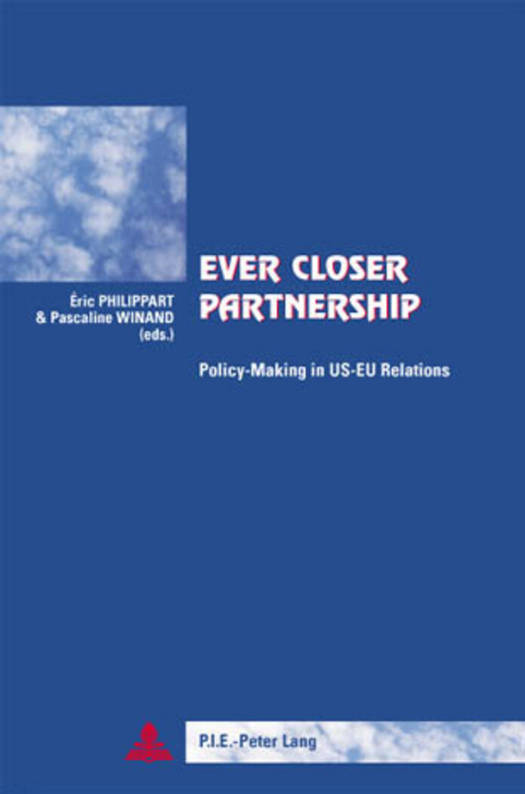
- Afhalen na 1 uur in een winkel met voorraad
- Gratis thuislevering in België vanaf € 30
- Ruim aanbod met 7 miljoen producten
- Afhalen na 1 uur in een winkel met voorraad
- Gratis thuislevering in België vanaf € 30
- Ruim aanbod met 7 miljoen producten
Zoeken
Ever Closer Partnership
Policy-Making in Us-Eu Relations- Third Printing
€ 121,95
+ 243 punten
Omschrijving
In 1990, the signature of the Transatlantic Declaration marked the formal recognition of the European Community as the third main element in the transatlantic institutional architecture, alongside NATO and bilateral relationships. Five years later, US-EU relations took another major step forward with the adoption of a 'New Transatlantic Agenda' (NTA). This volume puts this evolution into historical perspective by identifying the enduring features of the relationship. At the dawn of the Bush administration and in the wake of the Nice Treaty, it also makes a bold attempt at assessing the current state of US-EU relations, notably by taking stock of the changes introduced via the New Transatlantic Agenda. Aimed at practitioners and academics alike, and going well beyond a general overview of transatlantic relations, it first explores the evolution of structures and processes in US-EU relations while paying special attention to the policy-shaping and policy-making strategies of public and private actors. Focusing on the post-NTA record, it then endeavours to assess, explain and evaluate the policy outcomes of EU-US relations.
Leading authors and practitioners in the field took part in the elaboration of this book:
Maria Green Cowles, Youri Devuyst, Thomas Frellesen, Anthony Gardner, Roy Ginsberg, Alan Henrikson, John Peterson, Alberta Sbragia, René Schwok, Michael Smith.
Leading authors and practitioners in the field took part in the elaboration of this book:
Maria Green Cowles, Youri Devuyst, Thomas Frellesen, Anthony Gardner, Roy Ginsberg, Alan Henrikson, John Peterson, Alberta Sbragia, René Schwok, Michael Smith.
Specificaties
Betrokkenen
- Uitgeverij:
Inhoud
- Aantal bladzijden:
- 482
- Taal:
- Engels
- Reeks:
- Reeksnummer:
- nr. 24
Eigenschappen
- Productcode (EAN):
- 9789052012247
- Verschijningsdatum:
- 19/11/2003
- Uitvoering:
- Paperback
- Formaat:
- Trade paperback (VS)
- Afmetingen:
- 150 mm x 220 mm
- Gewicht:
- 649 g

Alleen bij Standaard Boekhandel
+ 243 punten op je klantenkaart van Standaard Boekhandel
Beoordelingen
We publiceren alleen reviews die voldoen aan de voorwaarden voor reviews. Bekijk onze voorwaarden voor reviews.







